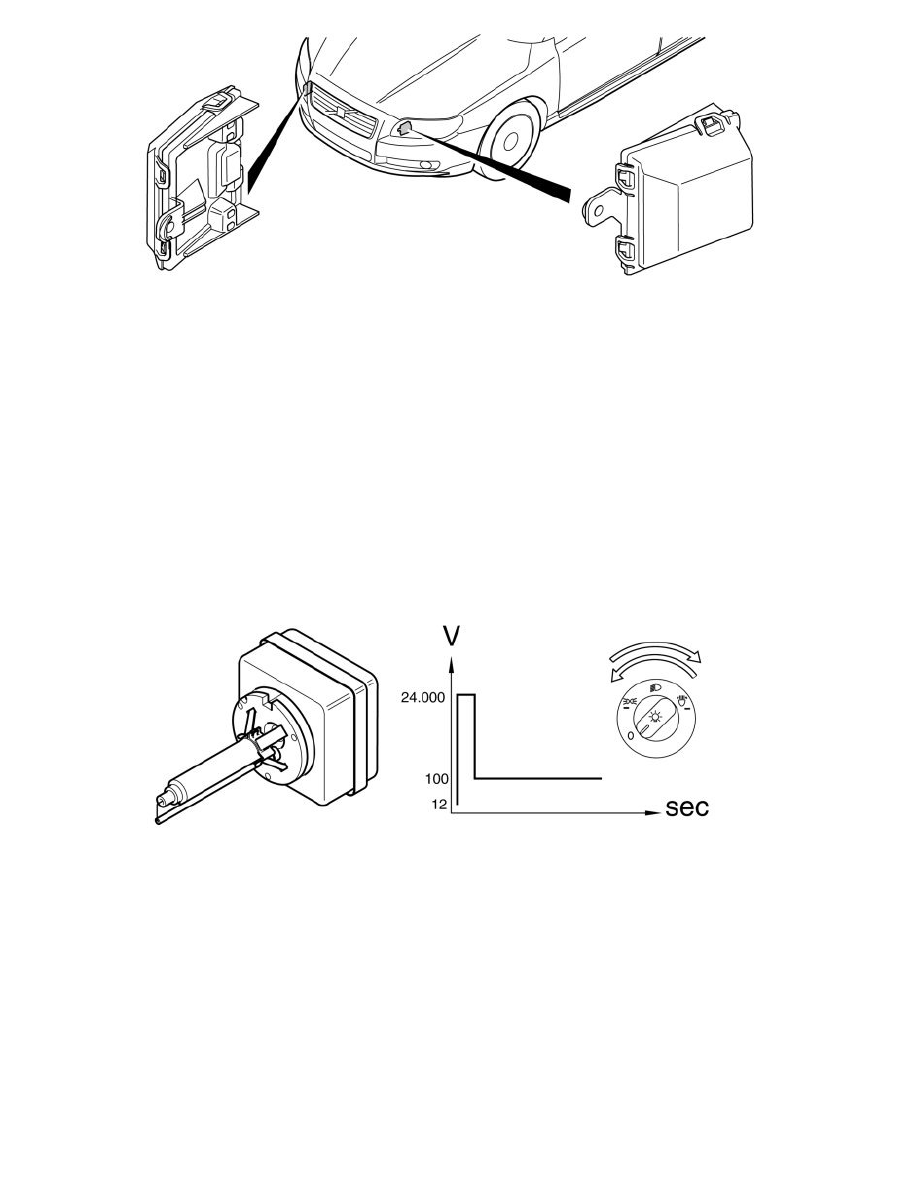S40 2.4i L5-2.4L VIN 38 B5244S4 (2008)

A control module is mounted under each light housing on vehicles with active headlights.
The left headlamp control unit (LHCU) and right headlamp control unit (RHCU) handle headlamp levelling and active control of the light beam. Active
control means that the light beam is turned out to the left or right. The light beam is turned out at varying degrees and rates depending on vehicle speed
and steering angle.
Information is transferred between the left headlamp control unit (LHCU), right headlamp control unit (RHCU) and headlamp control module (HCM)
via serial communication.
The lamp housing contains a sensor that indicates whether the light beam has been turned out to the right or left. The left headlight control unit (LHCU)
and right headlight control unit (RHCU) send this information to the headlight control module (HCM).
If there is no communication with the Headlamp Control Module (HCM) or a fault arises in the left headlamp control module (LHCU)and/or the right
headlamp control module (RHCU), active control stops and in certain cases also the light beam length control.
Then the light pattern goes to so-called "limp home"-mode, in order to not blind on-coming traffic.
Note! Do not adjust the headlight mechanically when the light pattern is in "limp home"-mode.
The left headlight control unit (LHCU) and right headlight control unit (RHCU) can be diagnosed.
High voltage unit
High voltage is required to light the Bi-Xenon lamp.
A high voltage unit is connected to each Bi-Xenon lamp. This transforms 12-V voltage to the approximately 24,000 V required to light the lamp. Once
the lamp is on, voltage is lowered to the approximately 100 V required to keep the lamp lit.
Every time that voltage is supplied to the high voltage unit, an attempt is made to light the Bi-Xenon light. If this voltage for a time of 200 ms does not
exceed 9.5 V, the light is not lit.
If voltage is too low, e.g., after a power consuming cold start, then the light is not lit just because the engine starts and the alternator begins to charge.
Then a new start attempt for the light must be performed by turning the control on the light switch to position "0" or parking light position, and then back
to position"2" or "3".
For vehicles on the Canadian market, low beams are activated in all positions for the control on the light switch. If the light is not lit due to the system
voltage having been too low, the vehicle must be started again to make a new attempt to activate the light.
Warning! Because of the high voltage it is important to follow the instructions for working with Bi- Xenon lamps and the high voltage unit!
